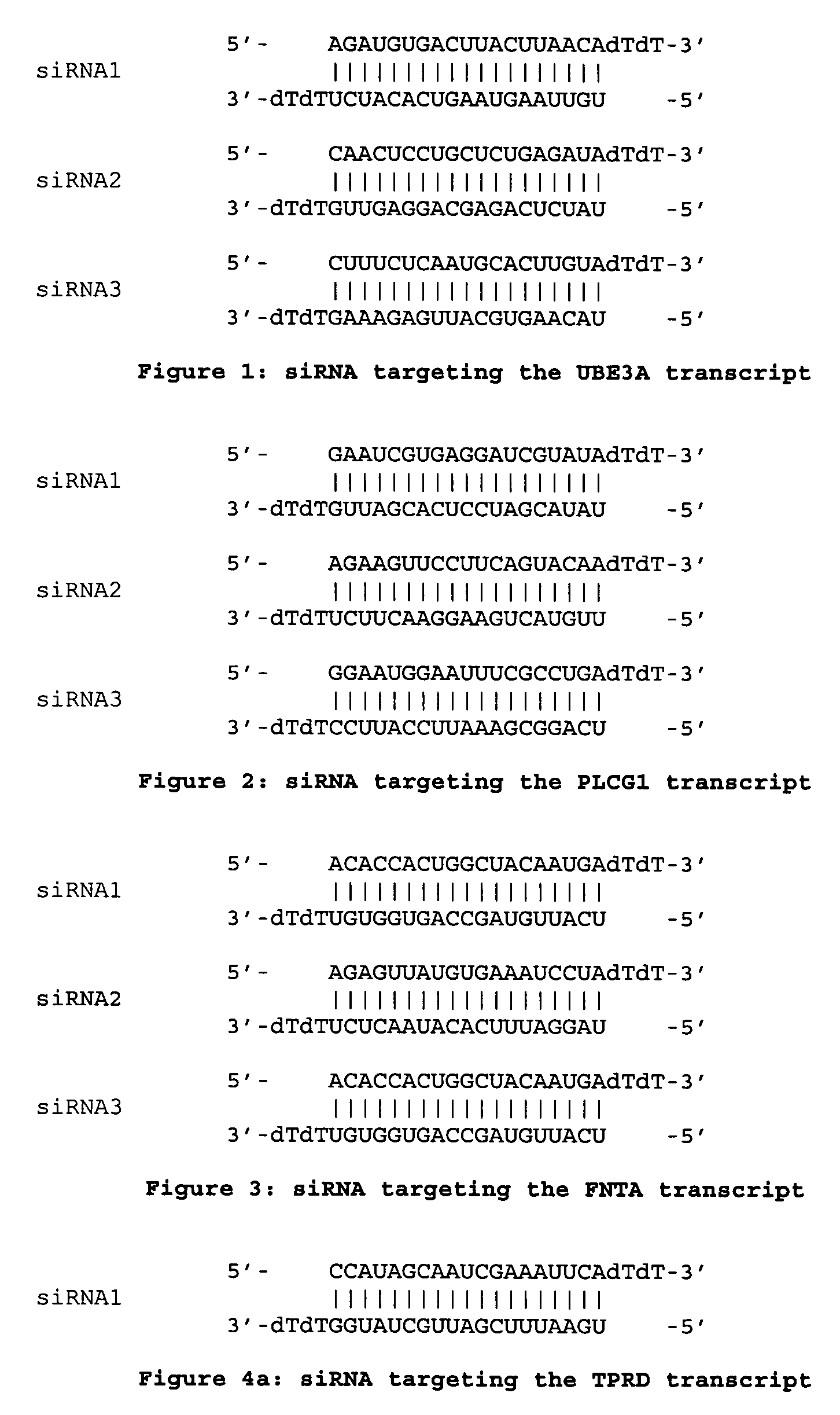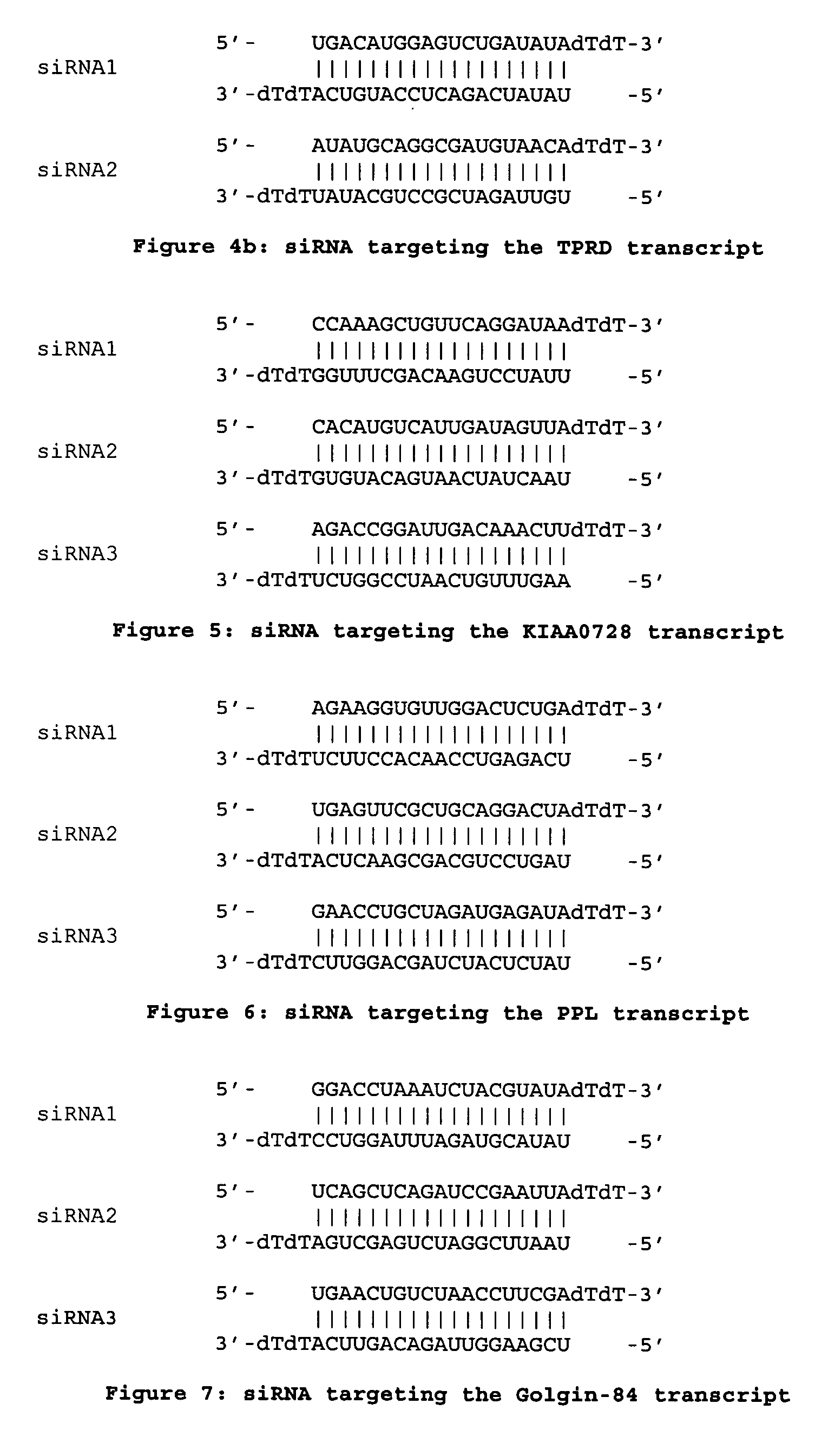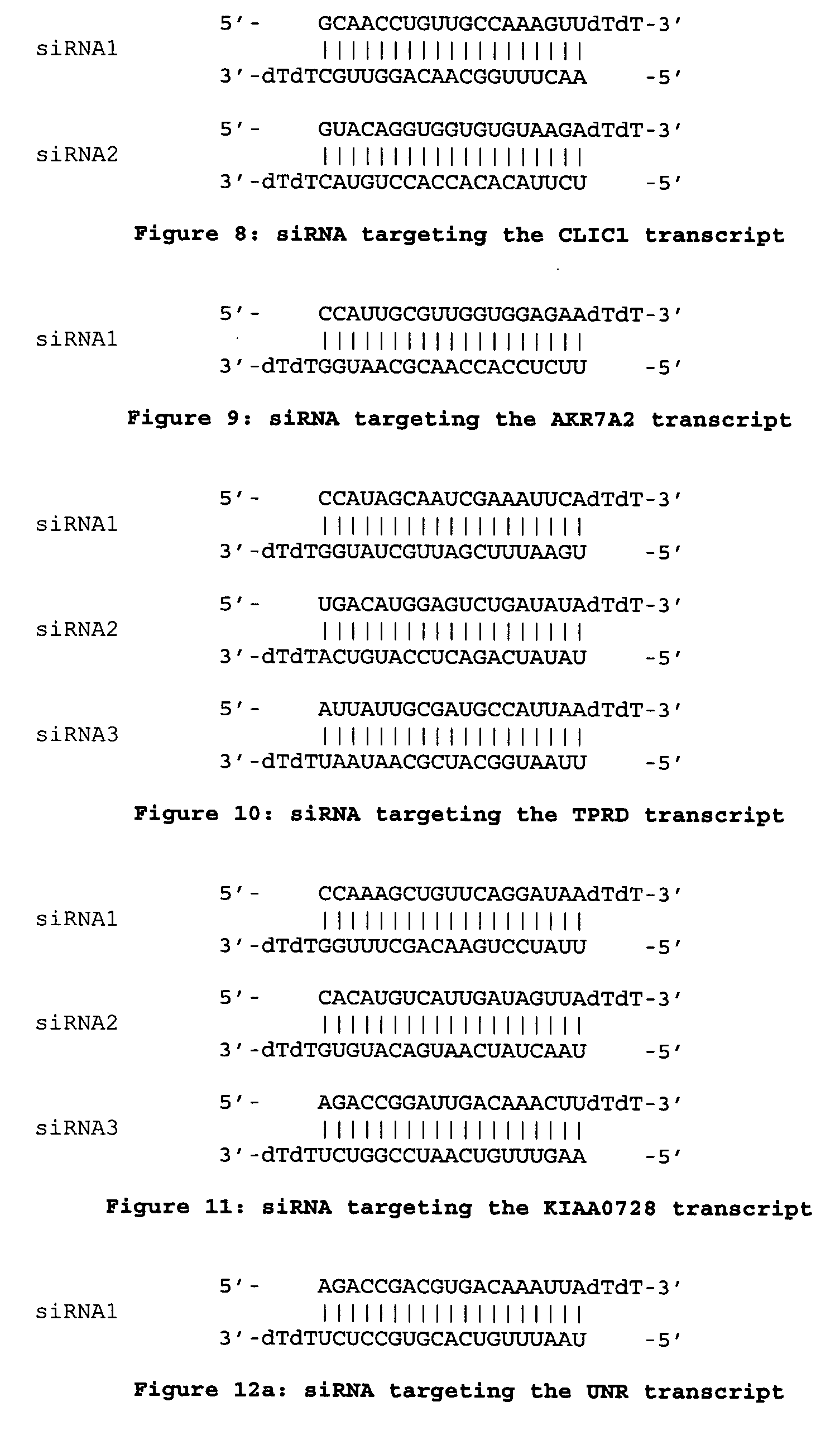Compositions and methods for treating diseases
a technology for diseases and compositions, applied in the field of diseases and compositions, can solve problems such as difficulties in pragmatically achieving, and achieve the effect of preventing or ameliorating diseases
- Summary
- Abstract
- Description
- Claims
- Application Information
AI Technical Summary
Benefits of technology
Problems solved by technology
Method used
Image
Examples
examples
[0456] The principles and methods of the yeast two-hybrid system have been described in detail in The Yeast Two-Hybrid System, Bartel and Fields, eds., pages 183-196, Oxford University Press, New York, N.Y., 1997. The following is thus a description of the particular procedure that we used to identify the interactions of the present invention.
[0457] The cDNA encoding the bait protein was generated by PCR from cDNA prepared from a desired tissue. The cDNA product was then introduced by recombination into the yeast expression vector pGBT.Q, which is a close derivative of pGBT.C (See Bartel et al., Nat Genet., 12:72-77 (1996)) in which the polylinker site has been modified to include M13 sequencing sites. The new construct was selected directly in the yeast strain PNY200 for its ability to drive tryptophane synthesis (genotype of this strain: MATα trp1-901 leu2-3,112 ura3-52 his3-200 ade2 gal4Δ gal80). In these yeast cells, the bait was produced as a C-term...
PUM
| Property | Measurement | Unit |
|---|---|---|
| Fraction | aaaaa | aaaaa |
| Fraction | aaaaa | aaaaa |
| Length | aaaaa | aaaaa |
Abstract
Description
Claims
Application Information
 Login to View More
Login to View More - R&D
- Intellectual Property
- Life Sciences
- Materials
- Tech Scout
- Unparalleled Data Quality
- Higher Quality Content
- 60% Fewer Hallucinations
Browse by: Latest US Patents, China's latest patents, Technical Efficacy Thesaurus, Application Domain, Technology Topic, Popular Technical Reports.
© 2025 PatSnap. All rights reserved.Legal|Privacy policy|Modern Slavery Act Transparency Statement|Sitemap|About US| Contact US: help@patsnap.com



